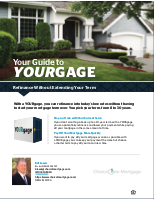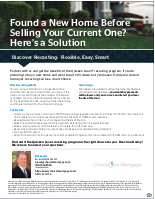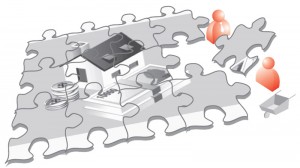When it comes to purchasing a home in La Quinta (or anywhere in the Coachella Valley or Southern California for that matter), there is no “one-size fits all” solution. Even though lenders are using similar underwriting guidelines these days, there are still differences impacting what each can offer you.
This is important stuff, and most La Quinta homebuyers that we talk to are unsure about the process and don’t know who to trust.
While this article offers tips on how to prepare for buying a new home and how to get the best mortgage, and we think you should read about all of them, here is a quick list of our recommendations:
- Know the Do’s and Dont’s of Buying a Home
- Take steps to improve your Credit Scores.
- Determine how much house you can afford
. Mak e sure you have sufficient funds for the down payment and closing costs.- Interview two or three loan officers – from different lenders.
- Get a complete breakdown of all costs.
Now let’s dive in deeper and look at these tips in more detail.
La Quinta Purchase Mortgage – Tip #1 – Know the Do’s and Dont’s of Buying a Home
Do’s of Buying a Home
- Do pay all of your credit cards, car loans and other debt that appears on your credit report on time.
- Do keep a sufficient balance in your bank accounts to pay for the down payment and closing costs.
- Do keep your money right where it is. Changing banks or moving money around your different accounts will require explanation and documentation and more hassles for you and the lender.
- Do gather your IDs, all of your income and asset documentation (
paystubs , W2s, tax returns, bank statements) and provide it to the lender in a timely manner. Delays in paperwork will only cause problems and delays in getting your purchase loan closed on time. - Do factor in your lifestyle. Ask your lender to figure out your top end of how much home you can afford based on your current income and expenses.
Don’ts of Buying a Home
- Don’t buy a new car – even if you are paying cash.
- Don’t quit your job!
- Don’t take out any new debt!
- Don’t make unusual bank deposits. If you do, or if you move money from one account to another, make sure you keep a paper trail for the underwriter. They will ask!
- Don’t drive up your credit card balances with large purchases.
- Don’t omit or exaggerate information on your loan application. The underwriter will find out the truth one way or the other.
Click on the image below to learn more about the Do’s and Don’ts of Buying a Home.

La Quinta Purchase Mortgage – Tip #2 – Take steps to improve your Credit Scores
It is important to understand that you cannot rely on credit scores from free online credit providers, like Credit Karma for example. The scores generated by most free services are called “educational” or “generic” and are not the scores used by mortgage lenders. We cannot use these credit reports! The reports we pull have scores that are developed specifically for the mortgage industry. I can’t tell you how many times people have called me telling what their scores are, only to find they are dramatically lower when we run their credit report.
We have a unique program called “Fresh Start”. When we see a situation where our borrower’s credit scores are low (or just below an important threshold) our Fresh State Team analyzes the credit report and advises us on specific things the borrower can do to raise their scores.
First, make sure you do not have unpaid credit accounts or collections. These will obviously drop your credit scores.
Second, make sure you are making all of your payments on time. These will obviously imporve your credit scores.
Third, don’t allow multiple lenders to run your credit report. Each one will create an “inquiry” on your report, and these can lower your credit scores. Although the impact to your credit score may only be minor, anything that causes your scores to drop is a bad thing right!
A simple solution to this is to only allow one lender to run your credit report. Ask them for a copy of the report (or the three credit scores from the report) – most good loan officers will accommodate you. You can then just let other lenders know what your scores are – better right!
Many things in the credit business are determined by credit score tiers. For example, a credit score between 700 and 720 may get you a particular rate at 0 point cost. A credit score between 680 and 699 might get you that same rate but at a cost. These are called Loan Level Pricing Adjustments and represent the risks to lenders that are posed by borrowers with lower credit scores.
Now let’s look at an example. Let’s just say that you start out with a credit score of 700. You call a few lenders, tell them all to run your credit report all in the goal of getting a few quotes. But wait, your score drops to 698!
You can see the impact this has on the rate you get, or more specifically, the cost for that rate.
Here is an even worse scenario. In one particular La Quinta purchase loan scenario that we came across, the minimum credit score to qualify for the loan was 620. Our client told us that their credit score was 612. When we pressed further, they said they had a few different lenders run their credit report. The is no way to know for sure, but it is safe to say that all of those inquiries lowered their credit score below the 620
Learn more about Credit Scores.
La Quinta Purchase Loan Tip #3 – Determine how much house you can afford
The current Real Estate market in Southern California makes it challenging for both renters and homebuyers. Property values are near all-time highs and the inventory of homes for sale is still quite low. To make matters worse, rents are often at absurd levels all over California.
The reality is that for many families, renting or buying is a challenge.
But, as you already know, it’s usually best to own a home. Who wants to pay off someone else’s property with rent payments, right!
Click on the image below to learn more about a Renting vs Buying a home.

Once you are determined to be a homeowner, you need to find out how much house you can afford. And you also need to make sure you can qualify for the purchase loan.
Use the home affordability calculator (above on the right or on our home page) to get a basic idea. It’s best to contact a reputable loan officer to review the purchase market and your ability to qualify for a mortgage.
Purchase Mortgage Tip #4 – Make sure you have sufficient funds for the down payment and closing costs
Although a large down payment of 20% or more will usually get you the best mortgage and interest rate, there are great programs that offer purchase loans with less than 5% down.
VA Loans require no down payment. Some Agency loan programs (Fannie/Freddie) offer 3% down options and FHA loans require as little as 3.5% down. And the rates are still great!
But if you are in the market for a Jumbo loan (typically over the Agency loan limit for your County), you will probably have to put down at least 10%.
What’s important is to identify what kind of borrower you are and then determine what you will need for the down payment. A good loan officer will be able to show you
You will also need to set aside money for your closing costs when purchasing a new home (see Tip #6 below). While we don’t charge points at Choice One Mortgage, there are still other fees that you will have to make sure you have covered. Appraisal, Title Insurance/Escrow Fees, Property Taxes, Homeowner’s Insurance, to name just a few.
A good loan officer can help you come up with creative ways to remove these costs. Well, actually not remove them, but just have the seller or lender pay them for you 🙂
Purchase Loan Tip #5 – Find and interview two or three loan officers – from different lenders!
It’s really important to find a knowledgable loan officer, but perhaps more importantly, one that you can trust.
Ask your friends and relatives for referrals. Chances are that if you find a lender that has done good work for someone you know and trust, this will lead to a good outcome.
If you can’t find a good referral, call a few lenders. The important thing is to get at least two or three people on the phone, pick their brains and get a sense of who you want to work with.
Ask each of the loan officers what makes them different from other lenders? What unique programs, rates or pricing advantages can they offer you?
For example, here at Choice One Mortgage, we offer some unique things to our clients:
Yourgage
With our “Yourgage” program, you can create a loan with the repayment term that you choose – from 8 to 30 years. Pretty cool!
Click on the image below to learn more about a Yourgage.

Recasting
2. We allow you to “recast” your loan at any time – without refinancing! For example, let’s say you sell a second home and want to use the proceeds from that sale to pay down the loan balance on your primary residence.
You don’t have to refinance to do this!
If we got your mortgage through Quicken Loans, you can simply pay down your balance and we will recast the mortgage at the same interest rate using your remaining term.
The new payment will be recalculated based on the lower loan balance. Great, right!!!
Click on the image below to learn more about recasting.

La Quinta Purchase Mortgage Tip #6 – Get a complete breakdown of all costs – and ask about your options to lower them!
Ask the loan officers you interview to provide a complete breakdown of all of their costs. A purchase loan involves multiple vendors and each one may charge a fee or fees. Have a discussion about all of the costs, which vendor is charging which fee, and if it is possible to get them reduced or waived.
Look out for things called “Administration fee” or “Processing fee”. Not all lenders or brokers charge these, but when you see them, they usually represent pure profit. All lenders typically charge an “Underwriting fee” (usually around $950), but if you see the other fees as well, watch out.
Lenders also will allow you to choose a higher interest rate and give you a
Learn more about closing costs you pay when buying a home.
La Quinta Purchase Mortgage – Conclusions from a top-rated mortgage lender
For most people, a mortgage is the biggest component of their overall debt picture. Understanding the choices and variables at play will help you make good decisions when shopping for a new mortgage.
When taking out a new purchase loan, your primary focus should always be to reduce the costs of the loan! There are two components to this – the interest charges over the life of the loan and closing costs that are charged on the transaction.
The more money you can save over the life of the loan, the more you will have for more important things – like a happy retirement!
But, perhaps most important of all, there is no substitute for working with an honest and trusted professional. Call Bill Lewis at Choice One Mortgage today. He certainly checks all of the boxes!
More great tips – Refinancing Your Mortgage.




